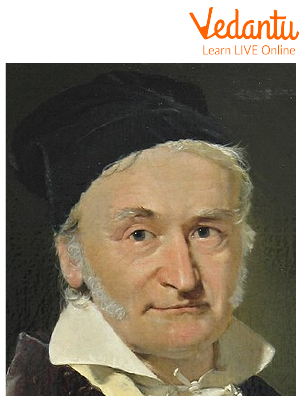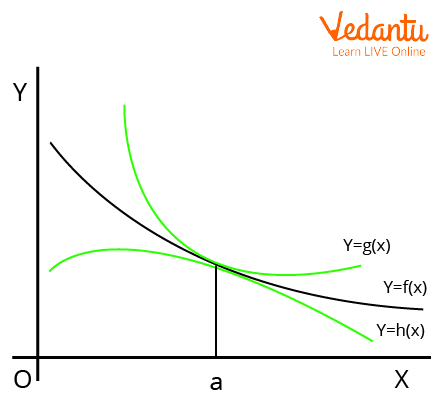




Squeeze Theorem: Brief Introduction
Squeeze Theorem, also known as Sandwich Theorem, is a theorem used to find the limits of a function that is squeezed between two functions. The modern Squeeze form was given by Carl Friedrich Gauss. In this article, we will discuss the Squeeze theorem and the steps to apply and prove the Squeeze theorem in questions. Squeeze theorem proof and examples will be elaborated in this article in simpler form for better clarity of the topic and how to do Squeeze theorem in function will be discussed here.
History of Carl Friedrich Gauss

Carl Friedrich Gauss
Name: Carl Friedrich Gauss
Born: 30 April 1777
Died: 23 February 1855
Field: Mathematics
Nationality: German
Statement of Squeeze Theorem
According to Squeeze Theorem, if g(x), f(x), h(x) are three functions such that
Squeeze Theorem Proof
Assume that

Squeeze Theorem
Using the definition of limits,
Now, it is given that
Subtracting
Let us choose
we have, whenever
So, from the above expression, we have
Hence, the squeeze theorem is proved.
Limitations of Squeeze Theorem
The squeeze theorem is not applicable if left and right function limits are not equal.
The squeeze Theorem does not apply if we know the limits of any of two functions other than both extreme functions.
Applications of Squeeze Theorem
The squeeze Theorem is used to reduce the tedious calculation of the limits of some functions.
The squeeze Theorem can be related to the converging power of the lense.
Squeeze Theorem Examples
1. Evaluate the limit
Ans: We know that
Then,
Since
we see that
2. Evaluate the limit using the Squeeze Theorem:
Ans: We know that
Next, multiplying the inequality by
Take the limit of each part of the inequality.
Next, we know that
Thus, we have
So,
3. Evaluate the limit using the Squeeze Theorem:
Ans: We know that
Next, multiplying the inequality by
Take the limit of each part of the inequality.
Next, we know that
Thus, we have
So,
Conclusion
In the article, we have discussed the detailed proof of the Squeeze Theorem and its proof. Squeeze Theorem in simple terms says that if you are stuck between two things, then you will go the same way the two things are going. In all, we can say that Squeeze Theorem is a fantastic theorem in calculus and we can say that calculus needs limits and limits needs Squeeze Theorem.
Important Formulas to Remember
If
Important Points to Remember
Squeeze Theorem is also known as Sandwich Theorem.
The limit of the Squeeze function has the same value as the limits of the other two functions.






FAQs on Squeeze Theorem
1. What are the different names of Squeeze Theorems?
We have different names associated with the Squeeze Theorem in different languages. The Squeeze Theorem is also known as Officers Theorem. There is an interesting story behind this nomenclature. Suppose two police officers are escorting a drunk prisoner between them, and both officers go to a cell, then the prisoner must also end up in the cell irrespective of the path taken by the police officers. There are other names also for the Squeeze Theorem:
Carabinieri Theorem
Police Theorem
Pinching Theorem
Sandwich Theorem
Between Theorem
2. Which type of function satisfies the Squeeze Theorem?
The squeeze theorem is applicable to all types of functions. The only thing required to satisfy Squeeze Theorem is that the limits of functions squeezing a function between them must exist and be equal. We use the squeeze theorem most widely for Trigonometric Functions. Squeeze Theorem is a fundamental tool of limits and limits are fundamental tools of calculus. The theorem is used to find the limits of functions where the usual algebraic operations are not effective in calculating the limit of the function.
3. Is the Squeeze Theorem applicable in the case of Sequences?
Yes, we have the application of the Squeeze Theorem in the case of Sequences also. The Squeeze theorem for Sequences states that if for three real-valued sequences, the limits of two sequences exist and are equal and the third sequence is sandwiched between these two sequences, then the limit of the sandwiched function will also be the same as the other two sequences. We can prove the Squeeze Theorem for sequences in the same way as done in calculus considering a positive integer n for which the condition satisfies.
























